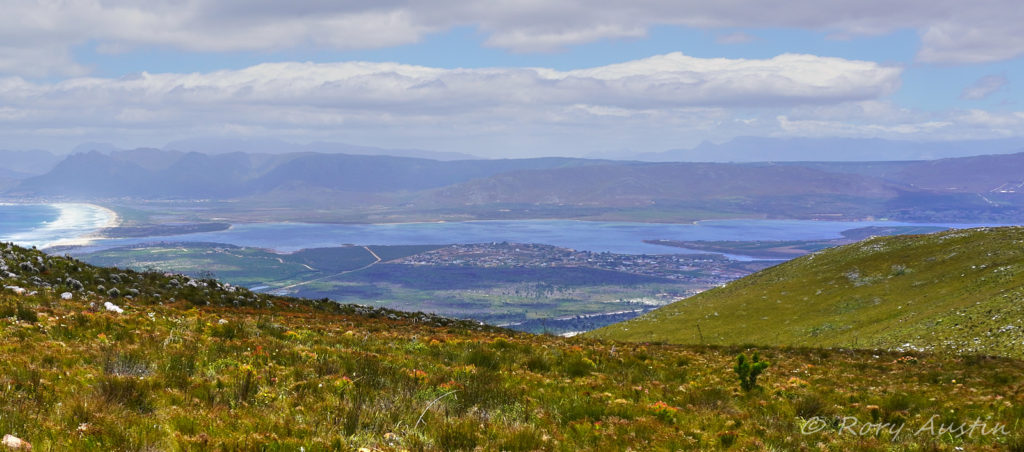
Alien species proliferation in Ward 8 report was compiled by Mike Austin in response to the national report released in 2017 as a preliminary assessment of Ward 8.
The Western Cape Biodiversity Bill draft report was released for comment in 2017. The report and messages distilled from the assessment provide an excellent basis for management guidelines and formulating environmental policy for the country as a whole. The lack of adequate planning and monitoring of the outcomes of control measures have been identified as a major weakness in South Africa. Positive returns on investment from spending on invasive species control measures is still possible, provided steps are taken to improve planning and management effectiveness (Van Wilgen et al, 2018).
Any project or proposal of trying to deal with invasive species, or environmental management, needs to have an assessment of the current status of the environment as a yardstick to measure the progression of improvement or deterioration of the environment.
The Bot River estuary and its environs is one of the richest species diversity areas within the Fynbos biome. The great diversity in the geology of this area and the blending of these geologies provide for a great diversity of species with many undocumented variants of species over short distances. The numerous wetlands usually carry more species diversity than surrounding areas. However, the area has been considered to be of low priority in the past, due to non-environmental factors, and five of the worst invasive alien species are rampant here. A management plan has not existed and much of the control methods have been inadequate and improperly applied.
Extensive detailed local data have been gathered on the area and properly devised, cost-effective control methods implemented in limited areas, through private funding by Botfriends and other volunteers. Extensive research on the Fynbos area has been done on water relations, biodiversity and fire aspects. A good summary of this extensive research was reported on by the Royal Society of South Africa (Van Wilgen et al, 2016).
A summary of the geology and status of biological invasions of the Bot River Estuary and environs has been compiled by Botfriends, which shows that the eastern side of the estuary, Fisherhaven through to Hawston, is the worst affected area within Ward 8. Timing is becoming critical as the invasive species have already entered a stage of exponential growth in this area (Austin, 2019).
Extensive wetlands occur in this area in a corridor from Hoek-van-die-Berg, through the Paddavlei and Skilpadsvlei to the estuary, with a branch corridor from below the Skilpadsvlei, heading south east towards the mountains. Most of this is on public land. A third corridor extends from the estuary up the Afdaks and its tributaries to the mountains. Most of this is on privately-owned land. A global report on the state of the world’s wetlands states that wetlands are disappearing three times faster than forests; that wetlands are essential in reigning in climate change as they store twice as much carbon as the world’s forests, even though they cover just 3% of all land surface (Rojas, 2018 in Ramsar, 2018).
The amount of water flowing through these wetlands has been severely reduced by extensive alien species invasions in the catchment areas and in the wetlands themselves. These species are primarily Port Jackson, Myrtle, pine and gum. This is leading to the collapse of many of the wetlands and therefore a severe reduction in the open water surfaces, especially in the last three years with extensive increase in reed growth. The species diversity of both flora and fauna has been severely reduced, with the loss of many fish and bird species to the area. The lack of proper functioning of the wetlands has also led to vast increases in the pollution levels, now moving down the system and entering the estuary: a potential disaster which is building at an exponential rate.
The fire risks, especially in areas bordering on built-up areas of Fisherhaven, Meerensee and Hawston have increased by more than three times due to the greater biomass of the invasive species. The fire risk has also increased by at least five times from extremely flammable species such as Port Jackson. Minister Hanekom reported that, flying over the recent George area fires, most of the fires were in invaded areas rather than natural forest or even planted plantations. An analysis of the Knysna fires showed the same trends (Austin, 2017). The extensive increase in, especially, Port Jackson within the Fisherhaven built-up area has increased the risk of a repeat of the Betty’s Bay disaster.
The report by van Wilgen and co-authors concludes that it should be imperative to improve management efficiency, given the substantial economic and social consequences that would be associated with a failure to address the problem of biological invasions adequately (Van Wilgen et al, 2018).
Positive returns on investment from spending on invasive species control measures is still possible, provided steps are taken to improve planning and management effectiveness (Van Wilgen et al, 2018).
Alien species proliferation in Ward 8 requires urgent solutions and funding is required for the clearing of invasive species to re-establish the clean water flow through the systems, re-establish the wetlands with all their species diversity and reduce the fire risks to manageable proportions before a disaster occurs. A properly functioning wetland system with an overall plan will then provide numerous services to the communities which live around these systems.
The proliferation of alien species in Ward 8 is particularly bad on the east bank of the Bot Estuary. This analysis follows on from a report on the Biodiversity & Biological invasions in Ward 8.
Austin, M. N., 2017. Knysna fires report.
Austin, M. N., 2019. The status of biological invasions of the Bot River Estuary and its environs. ‘Friends of the Bot River Estuary and Environs’ report.
Ramsar Convention on Wetlands. (2018). Global Wetland Outlook: State of the World’s Wetlands and their Services to People. Gland, Switzerland: Ramsar Convention Secretariat.
Van Wilgen, B.W. & Wilson, J.R. (Eds.) 2018. The status of biological invasions and their management in South Africa in 2017. South African National Biodiversity Institute, Kirstenbosch and DST-NRF Centre of Excellence for Invasion Biology, Stellenbosch.
Van Wilgen, B.W., et al (2016) Ecological research and conservation management in the Cape Floristic Region between 1945 and 2015: History, current understanding and future challenges, Transactions of the Royal Society of South Africa, 71:3, 207-303, DOI: 10.1080/0035919X.2016.1225607


Recent Comments